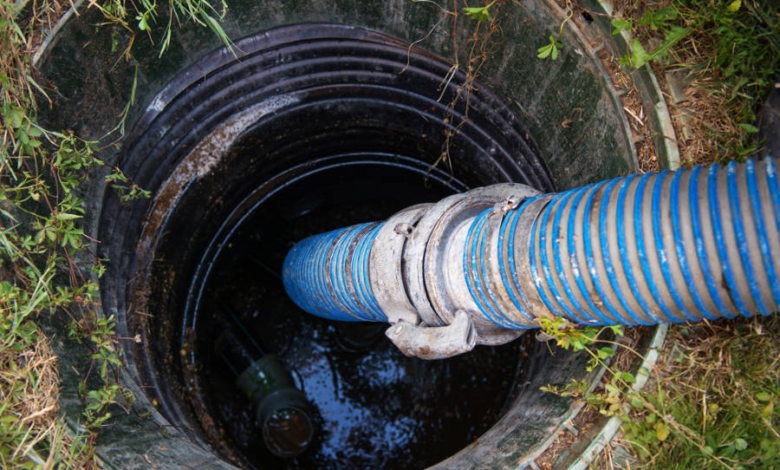Septic Tank Services: Maintaining Your Waste Management System

Septic tanks play a crucial role in managing household waste for millions of homes worldwide, especially in areas without access to municipal sewage systems. However, like any other system, they require regular maintenance, occasional repairs, and expert installation to ensure optimal functionality and longevity. In this comprehensive guide, we’ll delve into everything you need to know about septic tank services, including maintenance, repair, and installation.
Understanding Septic Systems
Before delving into services related to septic tanks, it’s essential to understand how these systems work. Septic systems typically consist of three main components:
- Septic Tank: This underground chamber is usually made of concrete, fiberglass, or plastic and is responsible for holding wastewater long enough to allow solids to settle at the bottom and oils and grease to float to the top. Bacteria inside the tank help decompose the organic matter.
- Drainfield: Also known as leach fields, these are trenches filled with gravel or porous material where wastewater from the septic tank flows. The wastewater percolates through the soil, where it undergoes further treatment and purification.
- Soil: Soil acts as a natural filter, removing harmful bacteria, viruses, and nutrients from the wastewater before it reaches groundwater.
Septic Tank Maintenance
Regular maintenance is crucial for the proper functioning of a septic system and to prevent costly repairs or replacements. Here are some essential maintenance tips:
- Pump Regularly: Depending on the size of your household and the capacity of your tank, it’s recommended to pump your septic tank every 3 to 5 years. This removes accumulated sludge and prevents it from clogging the drainfield.
- Conserve Water: Excessive water usage can overload the septic system, leading to premature failure. Install water-efficient fixtures and avoid running multiple water-heavy appliances simultaneously.
- Watch What You Flush: Only flush biodegradable and septic-safe items down the toilet. Avoid flushing non-biodegradable items like wipes, sanitary products, and chemicals, as they can clog the system.
- Maintain Drainfield: Avoid parking vehicles or planting trees or shrubs over the drainfield, as they can damage the pipes and hinder proper wastewater absorption.
- Regular Inspections: Schedule annual inspections with a qualified septic service professional to check for leaks, signs of damage, and overall system performance.
Septic Tank Repair
Despite proper maintenance, septic tanks may require repairs due to wear and tear or unforeseen issues. Some common signs indicating the need for septic tank repairs include:
- Foul odors emanating from the drainfield or around the tank area.
- Slow drains or backups in sinks, toilets, or showers.
- Lush, green patches of grass over the drainfield, indicating a leak.
- Pooling water or soggy soil around the tank or drainfield area.
If you notice any of these signs, it’s crucial to contact a professional septic service provider immediately to assess the situation and perform necessary repairs. Ignoring these issues can lead to more extensive damage and costly repairs down the line.
Septic Tank Installation
Proper installation is paramount to the long-term functionality and efficiency of a septic system. It’s not a DIY project and requires expertise and adherence to local regulations and guidelines. Here’s an overview of the septic tank installation process:
- Permitting: Obtain necessary permits from local authorities before installing a septic system. Regulations regarding septic tank installation vary by location, so it’s essential to comply with local codes.
- Site Assessment: A professional septic installer will conduct a site assessment to determine the soil composition, groundwater levels, and proximity to water sources or property lines. This assessment helps determine the optimal location for the septic tank and drainfield.
- Excavation and Tank Placement: Once the site is assessed, excavation begins to create a pit for the septic tank. The tank is carefully placed in the pit, ensuring proper alignment and support.
- Connection and Backfilling: Pipes are installed to connect the septic tank to the household plumbing system. After installation, the tank is backfilled with soil to secure it in place.
- Drainfield Installation: The drainfield is then installed, typically in trenches filled with gravel or other porous material. Proper spacing and grading are essential to ensure adequate wastewater absorption.
- Final Inspection: Once the installation is complete, a final inspection is conducted to ensure compliance with local regulations and proper functionality of the septic system.
Conclusion
Septic tank pumping encompass a range of maintenance, repair, and installation procedures aimed at ensuring the efficient and sustainable management of household wastewater. By following proper maintenance guidelines, addressing repairs promptly, and entrusting installation to qualified professionals, homeowners can prolong the lifespan of their septic systems and avoid costly disruptions. Remember, when it comes to septic tanks, proactive care is key to long-term reliability and performance.



